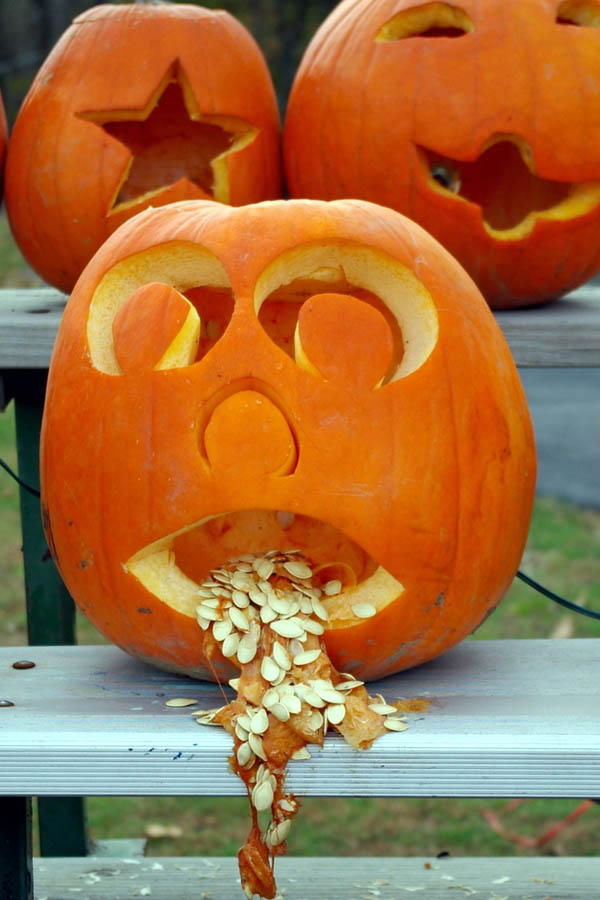Well, I’d like to be able to simply say “Happy Halloween!” and leave it at that. I love Halloween. Candy and costumes—it’s an unbeatable combination.
But I do get a sick feeling in my stomach (and not only because I ate too much of that candy) when I think of all the Halloween stuff destined for the landfill. (I can count about 20 big, plastic spiders hanging around my neighborhood right now.)
And the amount of Halloween stuff is no joke. After all, according to the National Retail Federation, Halloween is a $6.2 billion industry. And as Mother Jones’s Jaeah Lee puts it, “even in the midst of a troubling economy, Americans will spend an average of $72.31 on Halloween this year, the highest amount recorded in the last nine years.” What!? How much can that fake spider-web stuff cost?
But plastic swords that take centuries to degrade is only one scary aspect of this holiday. Mother Jones has a good run down of all that lurks in our Halloween trappings, including slave-labor candy, union-busting costumes, and lead-laden fake bling:
What’s in a pumpkin?
Pumpkin cultivation does have some harmful impact on the environment. The watchdog group What’s On My Food?, which aggregates Department of Agriculture data to monitor pesticide use, lists endosulfan sulfate as a main chemical found on winter squash, which includes pumpkins. Endosulfan sulfates have been known to have toxic and sometimes fatal effects on birds, freshwater fish, insects, and snakes.
This will turn even hard-core chocoholics off anything but fair trade sweets (GOOD lists organic and fair-trade candy here.)
The buckets full of Reese’s cups and Hershey’s Kisses we’ll pass out to trick-or-treaters this week is largely sourced from West Africa. (Some 70 percent of the world’s cocoa comes from that region.) Earlier this year, Tulane University published a report (commissioned by the Department of Labor) detailing child labor on cocoa farms in the Ivory Coast and Ghana, finding that a total of 532,030 children worked in cocoa farms or cocoa processing in the two countries, with some 113,000 reporting that they were working against their will. In the last year, major candy companies, including Nestlé, Mars, and Kraft, have pledged to purchase certified fair-trade cocoa, according to a September 2011 report by Global Exchange, Green America, and the International Labor Rights Forum. Hershey’s has lagged behind in commitments compared with its competitors. Progress has been slow, though, since these companies had already made similar pledges to reduce child labor back in 2001.
Halloween costumes aren’t kid-friendly either—at least not for the factory kids who are forced to make them. Batman and Barbie would not approve!
Those of you buying costumes or props this year will visit one of 16,450 stores across the United States to do so. Many will likely take home a costume made by Rubie’s Costume Company, the largest such manufacturer and distributor in the world. Rubie’s, which licenses brands from Mattel and Warner Brothers to create popular costumes such as Barbie and Batman, carries a dubious labor record. Back in 2005, some 60 of the factory workers at its plant in Tepeji del Río, Mexico, went on strike to contest alleged workplace child labor law violations, unsanitary conditions, no drinking water, and even forced pregnancy testing.
Then there’s the costume jewelry and makeup—those little zombies don’t just look toxic!
Last week the Center for Environmental Health found unsafe levels of lead and cadmium in Rubie’s-made costume jewelry.
In 2009, the Campaign for Safe Cosmetics independently tested 10 different brands of Halloween face paint, and in all 10 found traces of lead, a substance health experts deem unsafe at any level.
Obviously it’s hard not to sound like a Debbie Downer by bringing all this up, but I know for a fact that Halloween can be just as fun and a lot safer for everybody without all this ghastly stuff.

